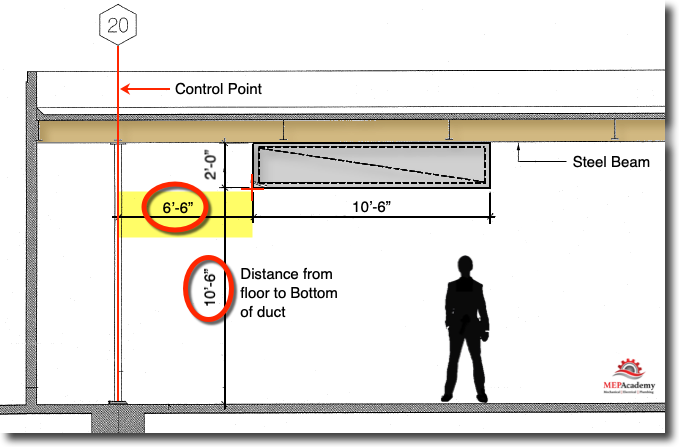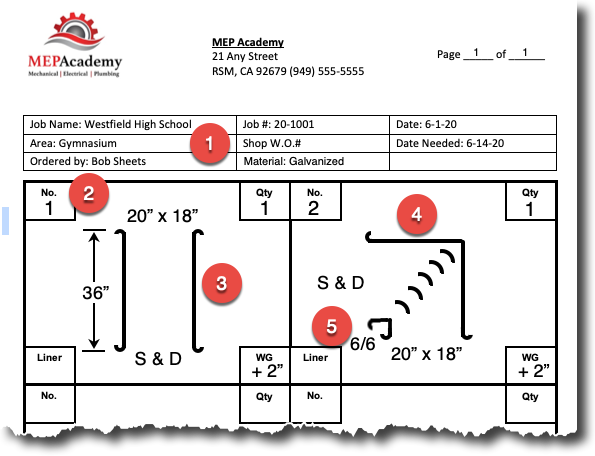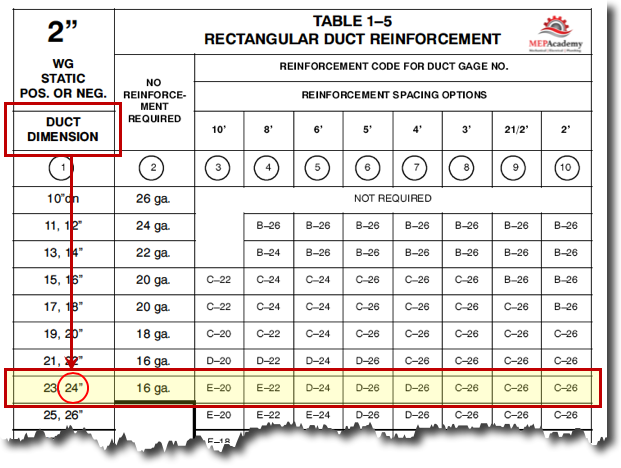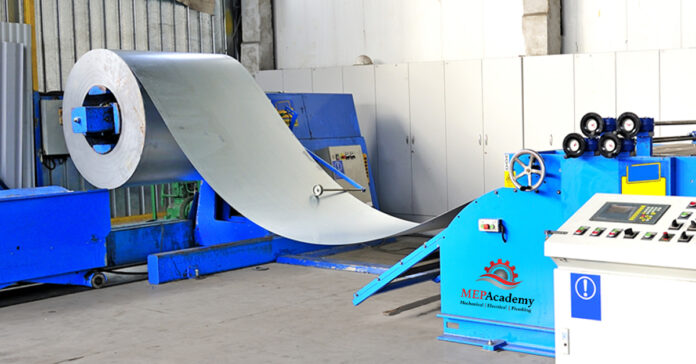Chapter #1 – Introduction to Sheet Metal Shop Fabrication
The sheet metal fabrication shop is where all the ductwork and fittings are fabricated for the installation of air conditioning and heating systems, the systems that carry the air from the source of cooling or heating to the room to be warmed or cooled.
The larger sheet metal fabrication shops will mostly likely be running on software that automates various pieces of shop fabrication equipment, while some will also be fully integrated with the detailing and estimating departments.
Detailing
Detailing is the process of creating shop drawings or detailed drawings that are coordinated with the buildings structural elements and other trades to avoid interferences that may occur between these trades. The detailed drawings will show the distances that your sheet metal or other HVAC components will be hung from columns, floors and other reference points. The detailed drawings also show how the sheet metal is to be fabricated. (see chapter on Sheet Metal Shop Drawings)
In the image below there is a very large duct (10’-6” x 2’-0”) that has been detailed to be hung 6’- 6” from structural column #20, and 10’-6” from the floor to the bottom of the duct in order to miss the structural steel beam. A detailer coordinates what the mechanical contractor needs to install within the building while trying to avoid collisions with building components and other trades to make sure everything fits as designed. This helps avoid change-orders.
Detailing needs to occur before the sheet metal fabrication shop makes one piece of duct. This is done by the sheet metal detailer using some form of CAD (Computerized Aided Design) software to layout the sheet metal on the drawings indicating duct sizes, lengths and joint types.

The benefit of using one software database for the sheet metal fabrication shop equipment, like the plasma cutter table and coil line is consistency of standards with the detailing and estimating departments. If the shop isn’t automated, then everything will have to be done manually for every piece of sheet metal.
Sheet Metal Order Forms
The sheet metal shop will receive an order from the detailer on some type of written or automated form created for this purpose (see example below). This form could also be used to order from an outside sheet metal fabricator if you don’t have your own sheet metal fabrication shop.
The form will indicate all the required information for each piece ordered, such as the material required, duct or fitting size, pressure class, lining and size, and joint ends required. Much of the rest of the requirements will be dictated by construction standards, whether SMACNA or in-house standards or a combination of local and industry requirements. Don’t worry we are going to cover all of these topics in the following chapters.

On the partial shop order form above there are two items ordered, the first one is a straight short piece of duct (#3) and the second one is a 90-Degree Elbow (#4). The duct and elbow both show the joint to be S & D (Slip & Drive) and the size to be 20” x 18”. This form can have 6 to 9 squares available for defining the requirements for duct and fittings. This form can also be used to just get a quote from your sheet metal fabricator.
SMACNA Standards
The sheet metal fabrication has to be built to some standard in order to maintain consistency and comply with the local code where the sheet metal is to be installed. SMACNA (Sheet Metal and Air Conditioning Contractors National Association) is the most used standard in HVAC sheet metal fabrication shops. SMACNA provides for various methods of fabrication for ducts, joint and seam types, in addition to various material types based on the pressure class.
Using SMACNA standards the shop will build pressure class tables that correspond to the various pressure classes.
Pressure Classes
Pressure classes define material thickness and reinforcement requirements. The pressure class relates to how much pressure the sheet metal ductwork will be exposed to by the fan when its blowing (positive pressure) or sucking (negative pressure).
Just think of how a balloon is blown up; the pressure created by you blowing into the balloon puts pressure on the wall of the balloon stretching it out the more you blow. The blowing up of a balloon or your car tire is an example of positive pressure and your vacuum cleaner is considered negative pressure as it sucks in air.
Below is the chart for SMACNA 2” pressure class. As the size of the duct increases, so does the thickness of the material indicated by its gage. Remember that the lower the gage number the thicker the material, similar to the game of golf where the lower the score the better. We will cover all of this in more detail in other chapters.

Fabrication Shop Cost
The question often asked by those companies that have their own fabrication shop is whether the shop pays for itself. The cost of a sheet metal fabrication shop is capital intensive with all the required equipment, in addition to the labor cost to keep a shop operating during high and low periods. The question is it less expensive to purchase the sheet metal from another sheet metal fabricator or to make it yourself.
Keeping track of the utilities, indirect labor, insurance, trucks, tools, rent and equipment cost that it takes to operate a sheet metal fabrication shop is important to understanding whether it makes more sense to purchase or make your own sheet metal. The burden cost of having your own sheet metal shop needs to be considered and analyzed before investing in the costly operation of a fabrication shop.
The total cost of the sheet metal fabrication shop is important in order to understand the shop burden that needs to be recovered. The shop burden is the total cost to run and operate a sheet metal fabrication shop. This shop burden will be recovered at a rate equal to whatever metric is being used to recover the cost. If this metric is based on the quantity of hours worked in the shop, then a labor burden will be added to the hourly rate for each shop worker based on the total expected hours in a year.
Burden Based on Labor Cost
Burden Cost $500,000 / 25,000 shop hours = $20/hr burden rate
Burden Based on Pounds
If the burden rate is based on pounds fabricated in a year, than the following simplified calculation could be used;
Burden Cost $500,000 / 1,000,000 Lbs = $0.50/Lb Burden Rate
Sheet Metal Shop Labor Feedback
Do you know what type of productivity your shop is producing? Does your shop keep productivity numbers monthly so you can determine what is the shops average production rate in pounds per hour? It is very important for your shop to keep track of its productivity so you can bid the current job at realistic numbers.
How many pounds of metal does the shop fabricate in a year and what is the total cost to operate the shop. The shop needs a method to measure the billable rate to charge per hour for the various personnel in the shop.
The cost to run the shop from the previous year is used to derive at a value that is used for the current years job costing. In the example above, the shop would add $20.00 per hour on top of the labor cost to recover the cost burden of owning and operating the fabrication shop.
If the shop used material cost to add burden cost, then adding and additional 50 cents to each pound that the shop fabricates would recover the annual burden cost of owning and running the fabrication shop.
As is obvious from the two examples above of owning and operating a fabrication shop above, the critical factor is determining how many hours or pounds of metal that will be used in the current year as opposed to the previous year of which the data is forecasted from.
Summary
Remember that the process begins by a detailer using some form of software to detail the project to fit within the structure and avoid collisions with other trades. If the project is small then computerized detailing might not be feasible.
Next the detailer will fill out some type of order form which defines the duct or fitting size, material thickness, seams and joints in addition to other requirements we’ll cover later.
The detailer will take into consideration the pressure class, that is the amount of pressure the duct will be subjected to by the fan.
The sheet metal fabrication shop will then begin the fabrication process based on what the detailer has requested to be made.
Now let’s look at chapter #2 to see what the most common materials used for ductwork in commercial HVAC projects.
- Chapter #1 – Introduction to Sheet Metal Shop Fabrication
- Chapter #2 – Sheet Metal Materials
- Chapter #3 – Sheet Metal Coil Line
- Chapter #4 – Plasma Cutting Table
- Chapter #5 – Spiral Machine
- Chapter #6 – Sheet Metal Seams
- Chapter #7 – Sheet Metal Joints
- Chapter #8 – Sheet Metal Shop Fabrication Productivity
- Chapter #9 – Casings and Plenums






